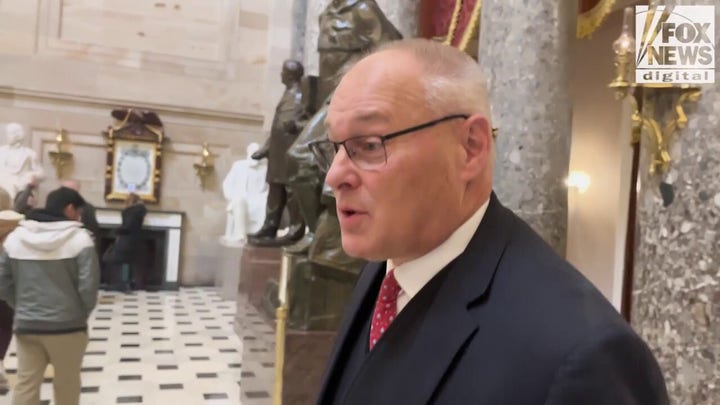The Social Security Administration’s (SSA) internal watchdog has confirmed that the agency’s publicly reported phone service data was accurate and that performance improved during fiscal year 2025, according to a new audit completed after Sen. Elizabeth Warren, D-Mass., questioned whether the figures could be trusted.
The Office of the Inspector General (OIG) reviewed the SSA’s national 800-number telephone metrics and found that the data the agency released to the public was correct, and that overall service improved during fiscal year 2025, according to a draft audit report provided to agency leadership ahead of public release. The report did not issue any recommendations to the agency.
The review was initiated after Warren expressed concerns in June about long wait times and the reliability of SSA’s phone performance data. She formally requested an audit on July 24, prompting SSA Commissioner Frank J. Bisignano, who serves under President Donald Trump, to agree to an independent review by the watchdog.
The audit found that SSA served 68 million callers during fiscal year 2025, either through live agents or automated systems, a 65% increase from the prior year. Average wait times fluctuated early in the year but improved steadily, according to the audit, ending the fiscal year at roughly seven minutes in September after peaking at about 30 minutes in January.
The metric cited by the agency, known as Average Speed of Answer, measures only the time callers actively wait on hold before speaking to an employee and does not include time spent waiting for callbacks.
‘Last year, people waited 40 minutes on the phone, and now they’re in single digits. We’re doing twice as many calls,’ Bisignano said.
In an exclusive interview with Fox News Digital, Bisignano said the audit confirmed what agency leadership had been reporting publicly about improvements in service levels.
‘Senator Warren was completely wrong in everything that she was saying, and it’s now been proven out,’ Bisignano said, citing the watchdog’s finding that SSA’s publicly reported telephone metrics were calculated accurately.
Bisignano said he welcomed the audit and was confident the data would withstand independent scrutiny.
The inspector general’s report concluded that SSA’s telephone performance improved during fiscal year 2025 largely because of operational changes, including the rollout of a new cloud-based telecommunications platform, expanded automation and staffing realignments. The platform, implemented in August 2024, allowed SSA to increase call capacity, expand self-service options and monitor performance in real time, according to the report.
The watchdog also confirmed that SSA’s internal data-verification process ensured accuracy by comparing raw data with reported metrics and working with vendors to resolve any discrepancies. The audit found no evidence that the agency misrepresented its national 800-number performance.
Bisignano said improvements were driven by a combination of technology, process changes and workforce adjustments.
The report explains that SSA experienced especially high call volumes between January and March 2025 due to Medicare and tax-related questions, as well as the implementation of the Social Security Fairness Act of 2023, which affected more than 3.2 million beneficiaries.
Despite the surge, the agency reduced average wait times over the course of the year.
The audit also found that about 25 million calls during fiscal year 2025 ended without callers receiving service, either because callers disconnected, did not answer callback attempts or encountered busy signals. Those calls were not included in the agency’s wait-time metrics.
Automation played a growing role in absorbing the surge. According to the audit, automated systems handled an average of nearly 2.9 million calls per month in fiscal year 2025, up from about 300,000 per month the year before. Automated services allowed callers to complete common tasks without speaking to a live agent, reducing pressure on phone lines.
The inspector general also reviewed how SSA calculates its Average Speed of Answer metric, which measures the time callers actively wait on hold before speaking to an employee. The audit clarified that callers who accept a callback are counted as having zero active wait time, a methodology that reduces the average but does not include the time callers wait to receive callbacks.
Bisignano said transparency about how the numbers are calculated is essential.
‘We figured out how to leverage technology, process engineering, and human capital,’ he said.
Staffing changes also contributed to the turnaround. Early in fiscal year 2025, the number of employees available to answer national 800-number calls declined by about 13%. By July, SSA began assigning roughly 1,000 field office employees each day to help handle national call volume. The audit found that this coincided with sharp improvements in wait times, with Average Speed of Answer dropping from about 13 minutes in June to roughly 7.5 minutes in July.
The audit did not evaluate service levels or wait times at local Social Security field offices.
Beyond wait times, the audit found that service quality remained high. About 87% of callers who responded to post-call surveys said their issue was resolved on the first contact. The survey results reflect feedback from callers who reached an SSA employee and do not include callers who only used automated services.
Bisignano said the improvements matter most for seniors and beneficiaries who rely on Social Security services.
‘We’re investing in Social Security and servicing the American public at a level they’ve never been serviced before,’ he said. ‘We’ll meet you where you want to be met: on the phone, in the field offices or on the web.’
He added that people who haven’t called the agency recently may be surprised by how much has changed.
‘What would surprise them the most is how quickly they can get their phone call answered,’ he said.
Looking ahead, Bisignano said the agency plans to continue expanding digital services and reducing backlogs, including in disability claims, while maintaining accountability through ongoing oversight.
‘Expect us to always have double-digit improvements in every metric we have,’ he said. ‘This is just the beginning.’
The OIG report in full can be read here.
‘The bottom line is that Donald Trump’s Social Security chief lied about call wait times to cover up his customer service mess,’ Sen. Warren said in an email to Fox News Digital. ‘This new watchdog report reveals that true wait times were more than three times higher than what Commissioner Bisignano claimed, and tens of millions of callers were simply unable to get help on the phone at all.’


